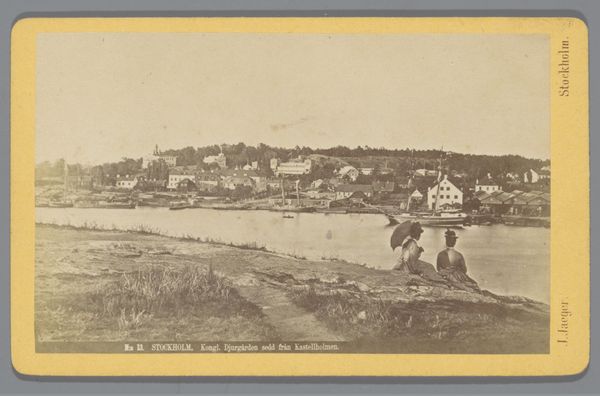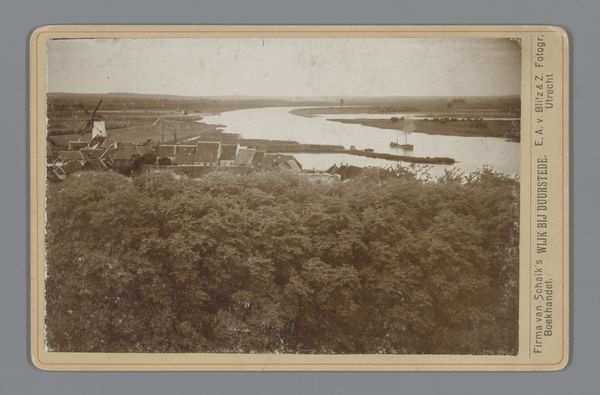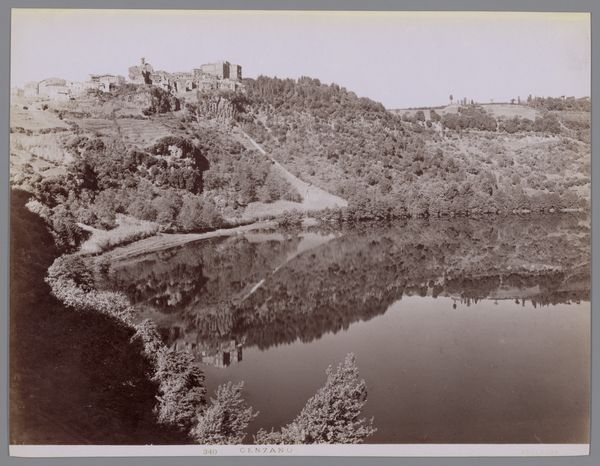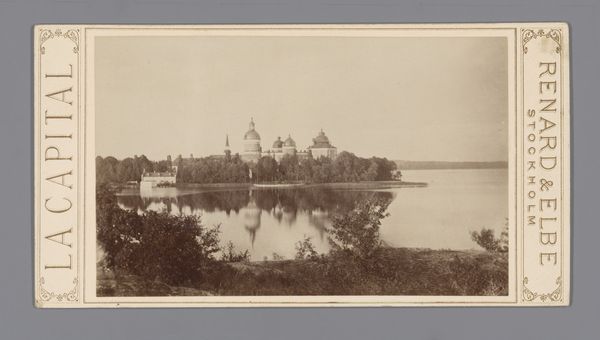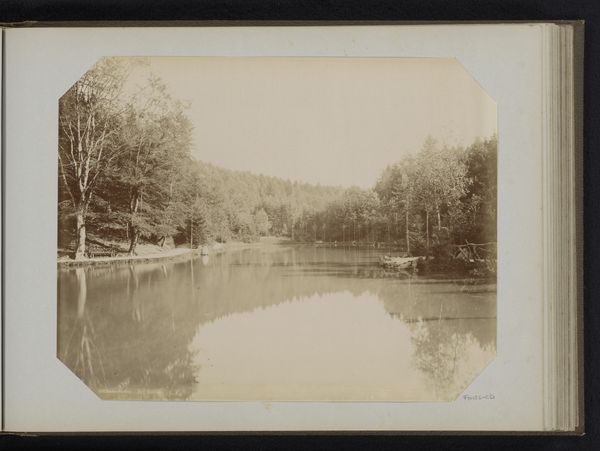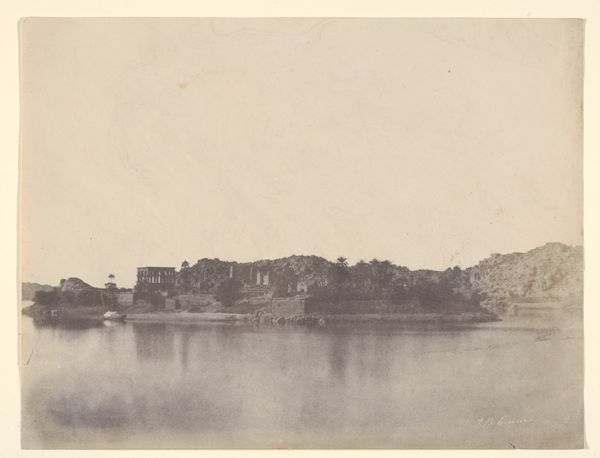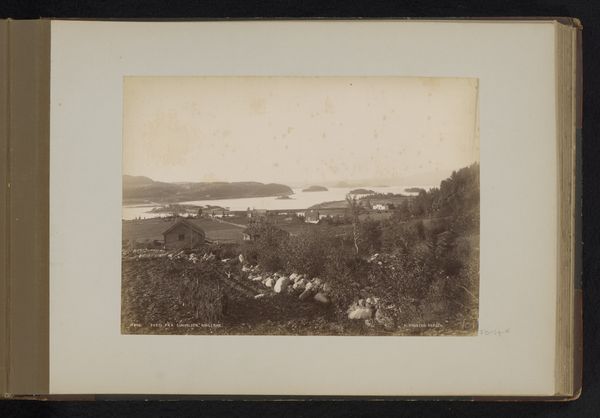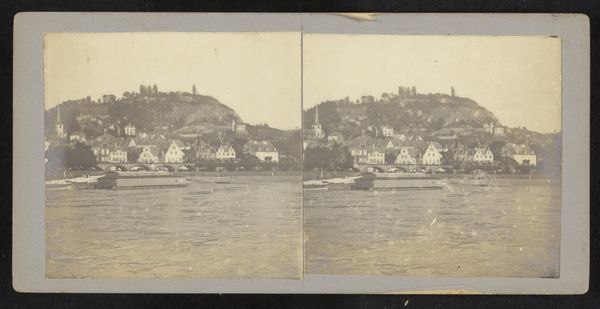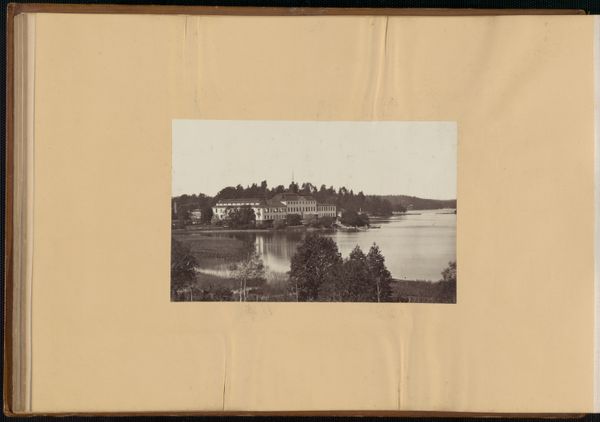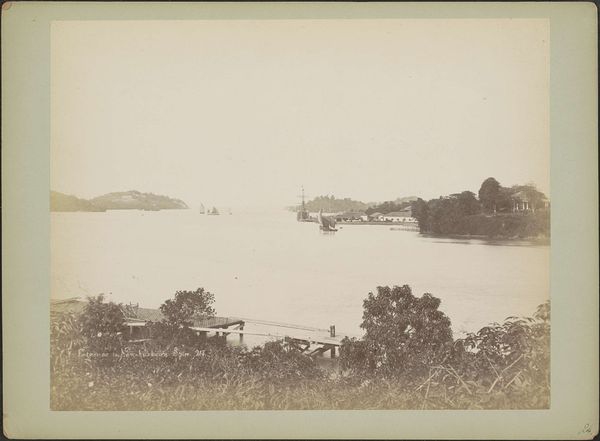
photography
#
landscape
#
photography
#
realism
Dimensions: height 63 mm, width 101 mm
Copyright: Rijks Museum: Open Domain
Curator: This softly tinted photograph, captured between 1879 and 1906 by Olaf Martin Peder Væring, presents a “View of the Oslofjord with Oscarshall Palace.” Editor: My first thought is one of serene detachment. The scene feels distant, almost dreamlike in its muted tones, and it reminds me of solitude. Curator: The dreamlike quality could arise from the limitations of the photographic process at the time. Væring likely employed albumen print, a technique rendering detail with a warm, sepia-toned softness, which undeniably romanticizes the fjord’s landscape. In the image, what stands out for me are the power structures embodied by that architecture, the presence of palatial symbols set against a natural backdrop. The act of capturing and framing these powerful markers normalizes the structure of inequity that defined life then. Editor: I'm drawn more to the water itself; the still fjord acting as a mirror to the sky. Water, as a symbol, speaks to both purification and potential destruction. That reflection suggests transformation and change. And if the still water mirrors the sky and its muted tone, is the landscape also going through its own period of change? Are we witnessing something beyond social hierarchy reflected here? The calm feels portentous, perhaps hinting at unseen currents—whether social, or personal. Curator: I agree the calm is a poignant and charged symbol here. The framing situates that sense of calm within the larger social milieu, reminding us to ask whose "calm" we are truly seeing? To acknowledge how notions of beauty are often manipulated by the elite narrative, shaping public perception and consent. Editor: Perhaps the enduring power of art lies in its ability to hold multiple, sometimes contradictory, truths simultaneously. It presents an interpretation, and it also compels others to arrive at different truths and perspectives as well. Curator: Absolutely. Viewing and interpreting images like these forces us to ask crucial questions about historical representations, especially in understanding whose perspectives are prioritised, and the cost. Editor: And sometimes what endures are the quieter signs—water, earth, light, sky— that can allow the past and present to coexist in a state of ongoing conversation and reconsideration.
Comments
No comments
Be the first to comment and join the conversation on the ultimate creative platform.

